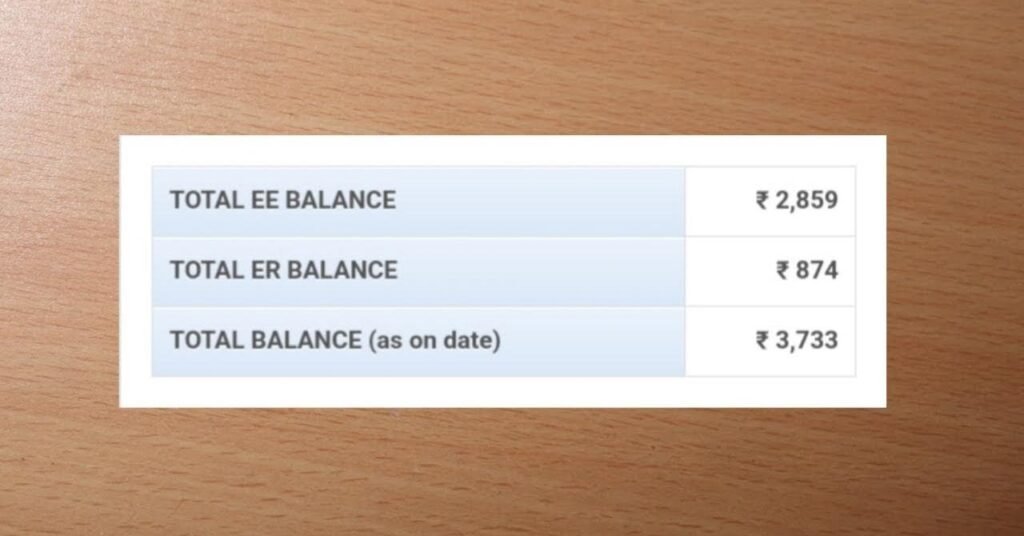Are you curious to know what is er balance in PF? You have come to the right place as I am going to tell you everything about er balance in PF in a very simple explanation. Without further discussion let’s begin to know what is er balance in PF?
Provident Fund (PF) is a retirement savings scheme that plays a crucial role in securing the financial future of employees. Both employers and employees make contributions to this fund to ensure that workers have a nest egg to rely on after retirement. Within the PF system, there exists an employee-employer balance that determines the financial responsibility of each party. In this blog, we’ll explore what the employee-employer balance in PF entails, how it works, and its significance for both parties.
What Is Er Balance In PF?
The employee-employer balance in Provident Fund refers to the distribution of contributions made to the fund by both parties. In many countries, including India, where the Employees’ Provident Fund (EPF) is widely used, this balance is predetermined by regulations and laws governing the fund. It signifies the division of financial responsibility and helps employees and employers understand their respective roles in securing retirement benefits.
Key Aspects Of The Employee-Employer Balance:
- Employee Contribution: Typically, a portion of an employee’s salary is contributed to the Provident Fund. This contribution is often deducted from the employee’s salary at a fixed percentage, which is decided by the government or the employer.
- Employer Contribution: Employers are also required to make contributions to the Provident Fund on behalf of their employees. The employer’s contribution is a separate sum of money that is not deducted from the employee’s salary.
- Regulations and Laws: The employee-employer balance in Provident Fund is subject to laws and regulations in the respective country or region. These laws specify the percentage of the employee’s salary that should be contributed to the PF and the rate at which employers should contribute.
How The Employee-Employer Balance Works?
- Employee Contribution: A fixed percentage of an employee’s basic salary and dearness allowance is deducted and contributed to the Provident Fund. This percentage can vary based on government regulations or employment terms.
- Employer Contribution: Employers are obligated to contribute an amount equal to or more than the employee’s contribution. The exact percentage or sum may differ based on the region’s Provident Fund rules.
- Total PF Corpus: The combined contributions from both the employee and the employer build a Provident Fund corpus. This corpus grows over the years as more contributions are added each month.
- Interest Accrual: The PF corpus earns interest, often at a rate determined by the government. The interest is usually compounded annually or as per the regional regulations.
Significance Of The Employee-Employer Balance
- Retirement Savings: The employee-employer balance in Provident Fund ensures that both parties contribute towards building a retirement corpus, which will provide financial support after an employee retires.
- Financial Security: The balance promotes financial security for employees, as the funds can be withdrawn or used during emergencies, housing, or other specific purposes.
- Employment Benefits: Employees are attracted to organizations that offer Provident Fund benefits as it symbolizes the employer’s commitment to the financial welfare of its workforce.
- Government Regulations: Adhering to the employee-employer balance is essential to comply with government regulations and avoid legal issues related to labor laws.
Conclusion
The employee-employer balance in Provident Fund is a fundamental aspect of financial planning and security for employees. It ensures that both parties, employees and employers, contribute towards building a retirement corpus that will offer stability and financial support after retirement. This balance is governed by regulations and labor laws, and it plays a crucial role in fostering employee well-being and financial stability during their working years and in retirement.
FAQ
What Is The Difference Between Ee And Er Balance In PF?
In PF both the employees and employer’s contributions get deposited. EE stands for Employee Contribution in EPF (Employee Provident Fund) and ER stands for Employer Contribution in EPF. So EE refers to the amount that the Employee contributes and ER refers to the amount that the employer contributes.
Can PF Be Withdrawn For Emergency?
In accordance with the EPFO’s ‘Illness Advance’ plan, members can withdraw a part of their provident fund in case of a medical emergency. They can make a withdrawal of up to Rs 1 lakh without the need for an estimate from the hospital or documentation.
What Is The Er Contribution For PF?
Employee contribution to EPF: 12% of salary. Employer contribution to EPF: 3.67% of salary.
What Is Eps And Er In EPF?
Apart from EPF, there is also the EPS, or Employee Pension Scheme, which is a part of the EPF scheme. The employer contributes 8.33% of the employee’s salary towards the EPS, and this contribution is separate from the EPF contribution.
I Have Covered All The Following Queries And Topics In The Above Article
What Is Er Balance In PF Withdrawal
What Is Er Balance In PF Online
What Is Er Balance In PF Balance Check
What Is Er Balance In PF App
Er PF Contribution
Er PF Full Form
Eps And Er In PF
Er In PF Means
What Is Er Balance In PF
What is er and ee balance in EPF






